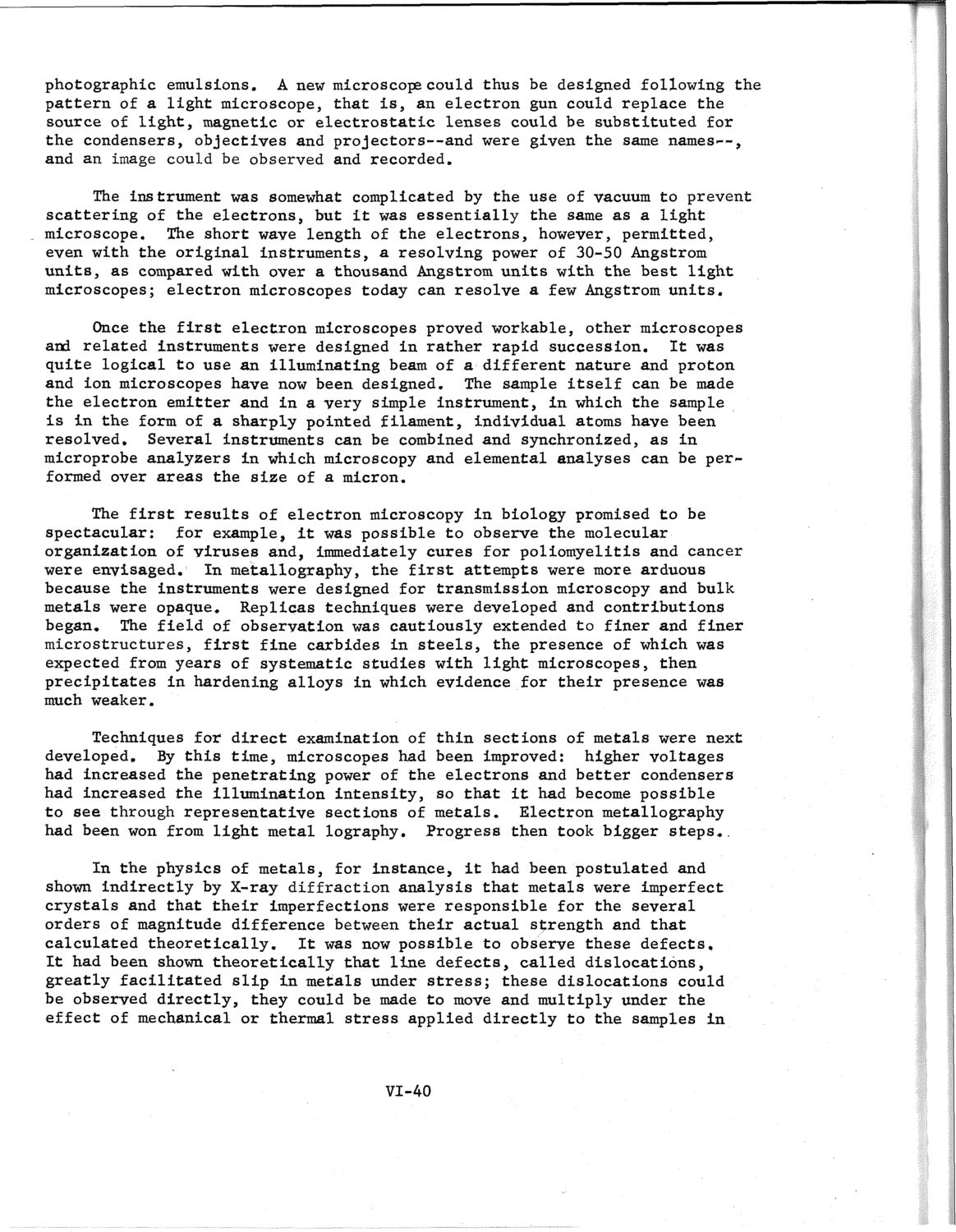| |
| |
Caption: SWE - Proceedings of the First International Conference of Women Engineers and Scientists
This is a reduced-resolution page image for fast online browsing.

EXTRACTED TEXT FROM PAGE:
photographic emulsions. A new microscope could thus be designed following the pattern of a light microscope, that is, an electron gun could replace the source of light, magnetic or electrostatic lenses could be substituted for the condensers, objectives and projectors—and were given the same names'—, and an image could be observed and recorded. The ins trument was somewhat complicated by the use of vacuum to prevent scattering of the electrons, but it was essentially the same as a light microscope. The short wave length of the electrons, however, permitted, even with the original instruments, a resolving power of 30-50 Angstrom units, as compared with over a thousand Angstrom units with the best light microscopes; electron microscopes today can resolve a few Angstrom units. Once the first electron microscopes proved workable, other microscopes and related instruments were designed in rather rapid succession. It was quite logical to use an illuminating beam of a different nature and proton and ion microscopes have now been designed. The sample itself can be made the electron emitter and in a very simple instrument, in which the sample is in the form of a sharply pointed filament, individual atoms have been resolved. Several instruments can be combined and synchronized, as in microprobe analyzers in which microscopy and elemental analyses can be performed over areas the size of a micron. The first results of electron microscopy in biology promised to be spectacular: for example, it was possible to observe the molecular organization of viruses and, immediately cures for poliomyelitis and cancer were envisaged. In metallography, the first attempts were more arduous because the instruments were designed for transmission microscopy and bulk metals were opaque. Replicas techniques were developed and contributions began. The field of observation was cautiously extended to finer and finer microstructures, first fine carbides in steels, the presence of which was expected from years of systematic studies with light microscopes, then precipitates in hardening alloys in which evidence for their presence was much weaker. Techniques for direct examination of thin sections of metals were next developed. By this time, microscopes had been improved: higher voltages had increased the penetrating power of the electrons and better condensers had increased the illumination intensity, so that it had become possible to see through representative sections of metals. Electron metallography had been won from light metal lography. Progress then took bigger steps.. In the physics of metals, for instance, it had been postulated and shown indirectly by X-ray diffraction analysis that metals were imperfect crystals and that their imperfections were responsible for the several orders of magnitude difference between their actual strength and that calculated theoretically. It was now possible to observe these defects. It had been shown theoretically that line defects, called dislocations, greatly facilitated slip in metals under stress; these dislocations could be observed directly, they could be made to move and multiply under the effect of mechanical or thermal stress applied directly to the samples in VI-40
| |